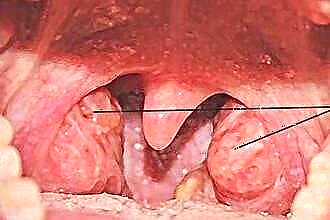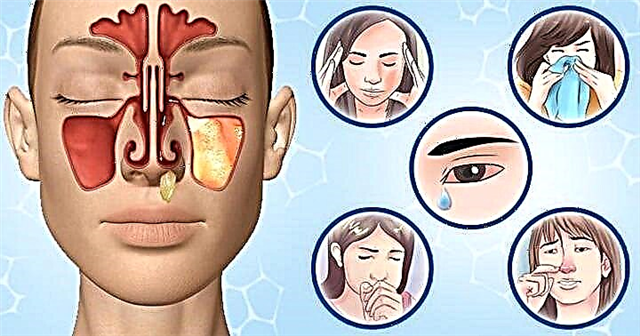The anatomy of the nasopharynx is most often viewed as an integral part of the human pharynx (pharynx), which is subdivided into the nasal, oral and laryngeal regions. The pharynx is at the same time the upper part of the respiratory tract and the beginning of the digestive tract. Since this part of the pharynx is constantly exposed to the air flow, which can be hypothermic or carry pathogens, diseases of the nasopharynx are very common.
Internal structure of the organ
 In the upper segment of the pharynx, approximately at the level of the zygomatic bones of the skull, temples and root of the nose, there is a small void connecting the oral and nasal cavities. In fact, this is not a separate organ, but a cavity that performs certain functions.
In the upper segment of the pharynx, approximately at the level of the zygomatic bones of the skull, temples and root of the nose, there is a small void connecting the oral and nasal cavities. In fact, this is not a separate organ, but a cavity that performs certain functions.
The structure of the nasopharynx is quite simple. Its walls consist of small bundles of muscle fibers that diverge in different directions. From above, it is covered with a multilayer unilamellar epithelium. There are several walls:
- The upper wall (vault) is connected to the occipital and sphenoid bones.
- The lower wall borders on the soft palate, which, when swallowed, rises, blocking the passage into the oral cavity. This prevents food from entering the nasal chamber. During the respiratory process, the soft palate is adjacent to the root of the tongue.
- The posterior one is adjacent to the cervical vertebrae (first and second), separated from them by a layer of loose connective tissue. This makes the walls of the chamber mobile.
- The anterior one is connected to the nasal cavity through special openings (choanas).
- The lateral ones have outlets for the auditory (Eustachian) tubes. They are surrounded by cartilaginous ridges and connect the middle ear to the environment, regulating pressure and draining the voids of the middle ear. Through the pharyngeal openings, there is a connection with the tympanic cavities and the normal transmission of sound signals.
In fact, due to the structure of the human nasopharynx, all the voids that are located in the skull are interconnected.
On the fornix and lateral walls of the nasopharynx are the tonsils, which are local accumulations of tissues of the lymphatic system and participate in the formation of the local immune system. The scheme of the nasopharyngeal tonsils includes:
- adenoids (unpaired pharyngeal tonsil) from above;
- palatine tonsils (paired) on the sides;
 the lingual tonsil below.
the lingual tonsil below.
Thus, a kind of protective ring is formed, which prevents pathogens from entering the respiratory and digestive systems.
Newborn children have differences in the structure of the cavity, since it has not yet been fully formed. Its width and height are much less than that of adults; a semicircular vault does not form. Choanas are small and at first have a triangular or round shape, but by the age of two they double and acquire an oval shape.
The role of the nasopharynx in the body
Despite its seemingly simple enough structure, the organ performs a number of important tasks. The main functions of the nasopharynx:
- Connective. Transporting air flow not only through the nose, but also through the mouth due to the connection of the oral cavity with the nasal sinuses.
- Heating. The mucous membranes covering the cavity are permeated with blood vessels, which organize active heat exchange. Thus, the temperature of the air entering the throat rises to values sufficient for the safe functioning of the lower parts of the respiratory system (trachea, lungs).
- Protective. The presence of tonsils allows you to bind viruses and pathogenic bacteria that enter the human body by airborne droplets. The cilia of the ciliated epithelium intensively remove associated microbes.
- Olfactory. In the mucous membrane, special surfaces are located, which are highly sensitive and capable of distinguishing the smells of aromatic substances even in small quantities (several molecules).
Organ diseases, their diagnosis and prevention
Examination of all parts of the pharynx and their treatment is carried out by a specialized specialist - an otolaryngologist (ENT doctor). Given that the upper part of the pharynx takes the first blow from pathogens, its ailments are very common. There are about ten of the most typical diseases of this organ, of varying complexity and origin.
To get a complete clinical picture of the disease, the doctor conducts professional diagnostics. There are three main methods used for this:
 Visual examination with the introduction of a nasal mirror, on the basis of which a preliminary diagnosis is established, which can subsequently be clarified taking into account the data of analyzes or more detailed studies.
Visual examination with the introduction of a nasal mirror, on the basis of which a preliminary diagnosis is established, which can subsequently be clarified taking into account the data of analyzes or more detailed studies.- Laboratory research. They are carried out to determine the causative agent of the disease, the reaction to it of the main body systems and the selection of drugs for the most effective suppression of the pathogen, in particular, antibiotic therapy. The main research is the analysis of urine and blood, a smear from the mucous membrane.
- Endoscopic examination. It is carried out using a special device - an endoscope (fiberscope), which is a flexible thin tube. Before the procedure, anesthesia is carried out by injecting a solution of lidocaine. Endoscopy is indicated for everyone, even for young children, it enables the doctor to identify the focus of inflammation and determine its degree. At the same time, it is possible to display the results on a computer monitor. During endoscopy, the nasal cavity, the mouth of the Eustachian tubes, the pharyngeal tonsil, cartilaginous ridges, and epithelial membranes are examined. Sometimes biopsy of biological material is also necessary.
The most common diseases of the nasopharynx:
- Laryngitis. It is an acute inflammation that affects the lining of the throat. Usually it heals quite easily and quickly, but it gives painful sensations, often strong.
- Pharyngitis. Respiratory disease with spreading inflammation. It is treated with conservative methods.
- Acute tonsillitis (tonsillitis). Damage to the tonsils by pathogenic bacteria. It is treated with antibiotics, it passes quickly enough with the timely initiation of therapy. In terms of the frequency of patient visits, it is second only to ARVI and influenza.
- Paratonsillitis. It is mainly a complication of sore throat, when the infection penetrates into the thickness of the soft palate. The most common pathogen is streptococcus.
- Retropharyngeal abscess. Purulent inflammation of loose tissue and lymph nodes, developing against the background of various infectious diseases (tonsillitis, measles, scarlet fever, diphtheria) or injury to the membranes. In most cases, children are sick. It is treated with antibiotics, gargles and heat treatments.

- Adenoiditis. Overgrowth of the adenoids, which leads to complication or even complete cessation of nasal breathing. This is mainly found in children, often people pay attention to this disease only when it goes into the chronic stage. To restore breathing, surgical excision of overgrown tissues is used, which normalizes the situation, but to some extent weakens the local immunity.
- Hypertrophy of the palatine tonsils. Preschool children suffer the most from it, often developing in parallel with adenoiditis. It is medically treated with antiseptic, astringent and cauterizing agents. If the overgrowth covers more than two-thirds of the pharynx, surgical removal of the affected glands is recommended.
- Injuries, injuries, foreign bodies. In this case, the severity of the injury determines the treatment options - medical or surgical.
The main symptoms of most organ diseases are fever, general intoxication, pain in the affected area.
Sometimes a cough and increased mucus production is added. In addition to drugs (antibiotics, antipyretic and vasoconstrictor drugs, mucolytics), bed rest, drinking plenty of fluids, a special diet, compresses, rinsing and physiotherapy are prescribed.
Preventive measures aimed at preventing throat diseases:
- A healthy lifestyle (playing sports and physical education, hardening, regular ventilation of the premises).
- Strengthening the immune system (rational and healthy nutrition, courses of vitamin and mineral complexes in the autumn and spring seasons, inhalation).
- Avoiding respiratory diseases that are symptomatic of rhinitis. In case of their occurrence, timely treatment and referral to a doctor in order to avoid complications, relapses or the development of a chronic form of the disease.
- Avoiding hypothermia of the body, especially the legs.

 the lingual tonsil below.
the lingual tonsil below. Visual examination with the introduction of a nasal mirror, on the basis of which a preliminary diagnosis is established, which can subsequently be clarified taking into account the data of analyzes or more detailed studies.
Visual examination with the introduction of a nasal mirror, on the basis of which a preliminary diagnosis is established, which can subsequently be clarified taking into account the data of analyzes or more detailed studies.

